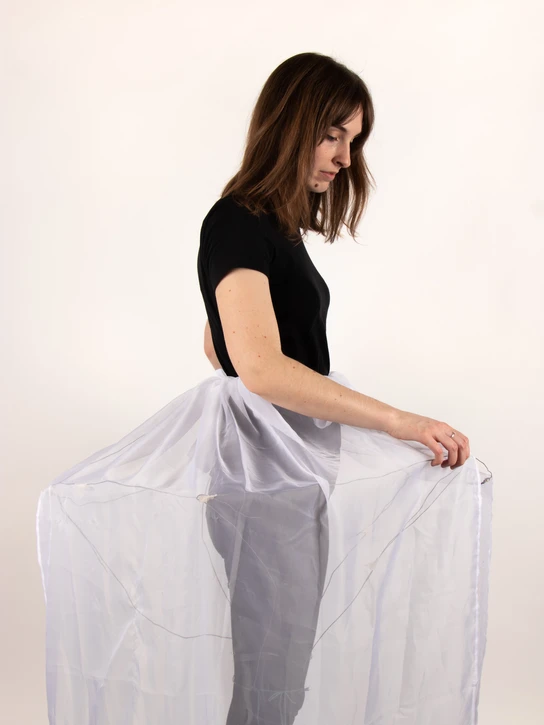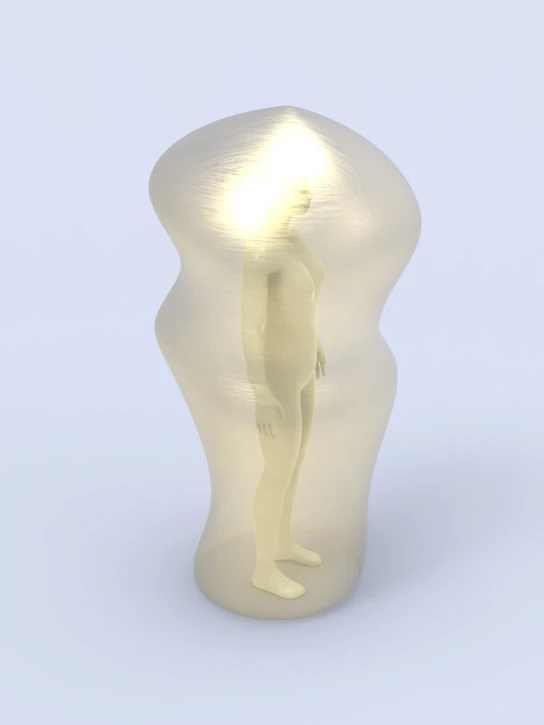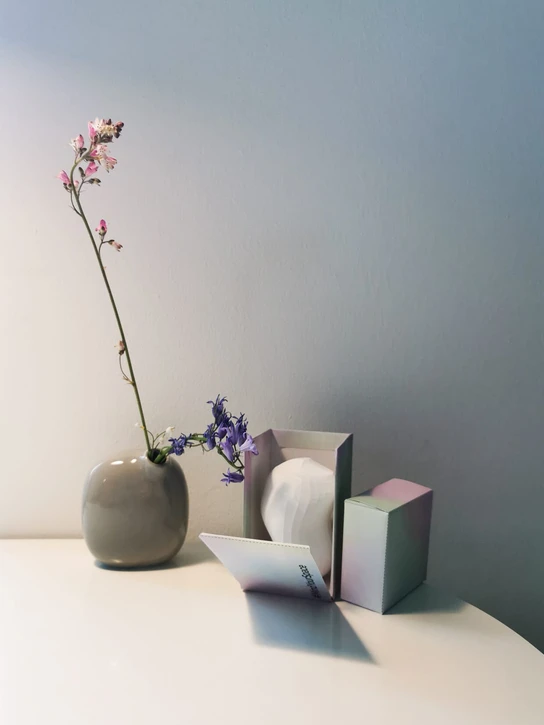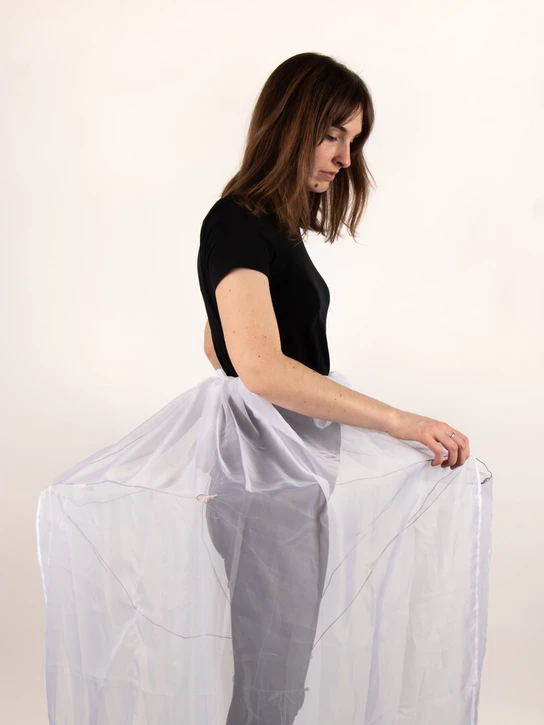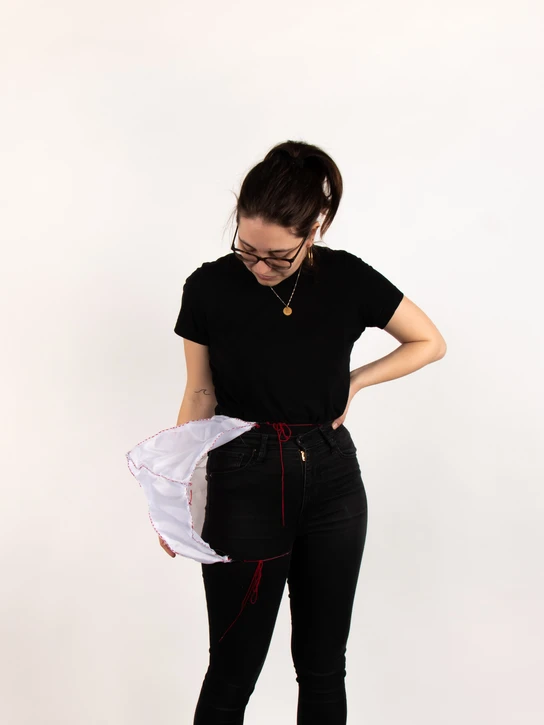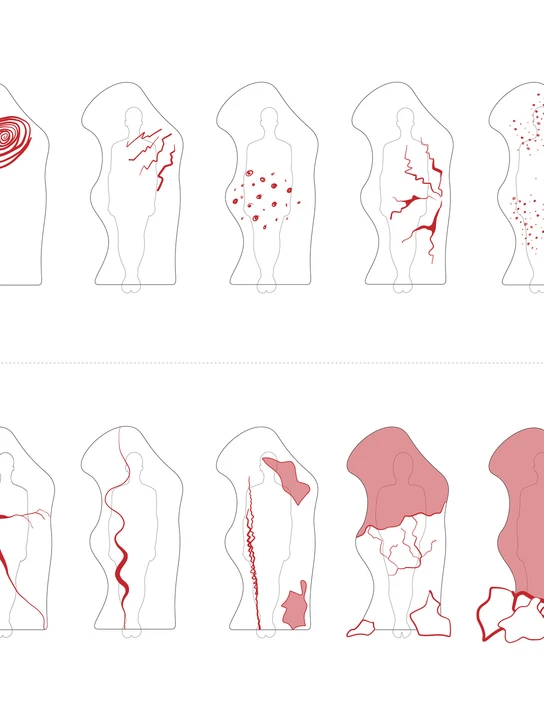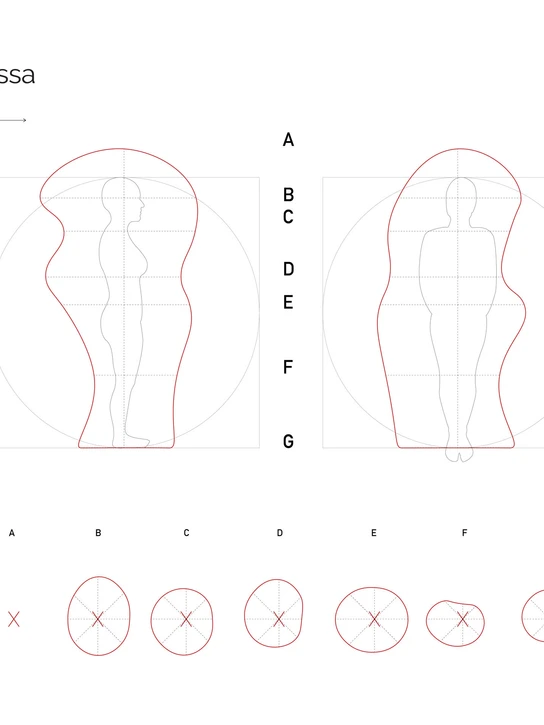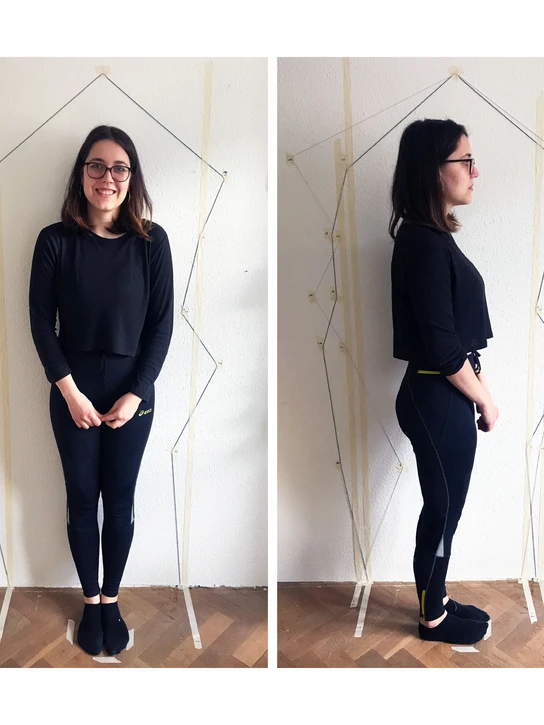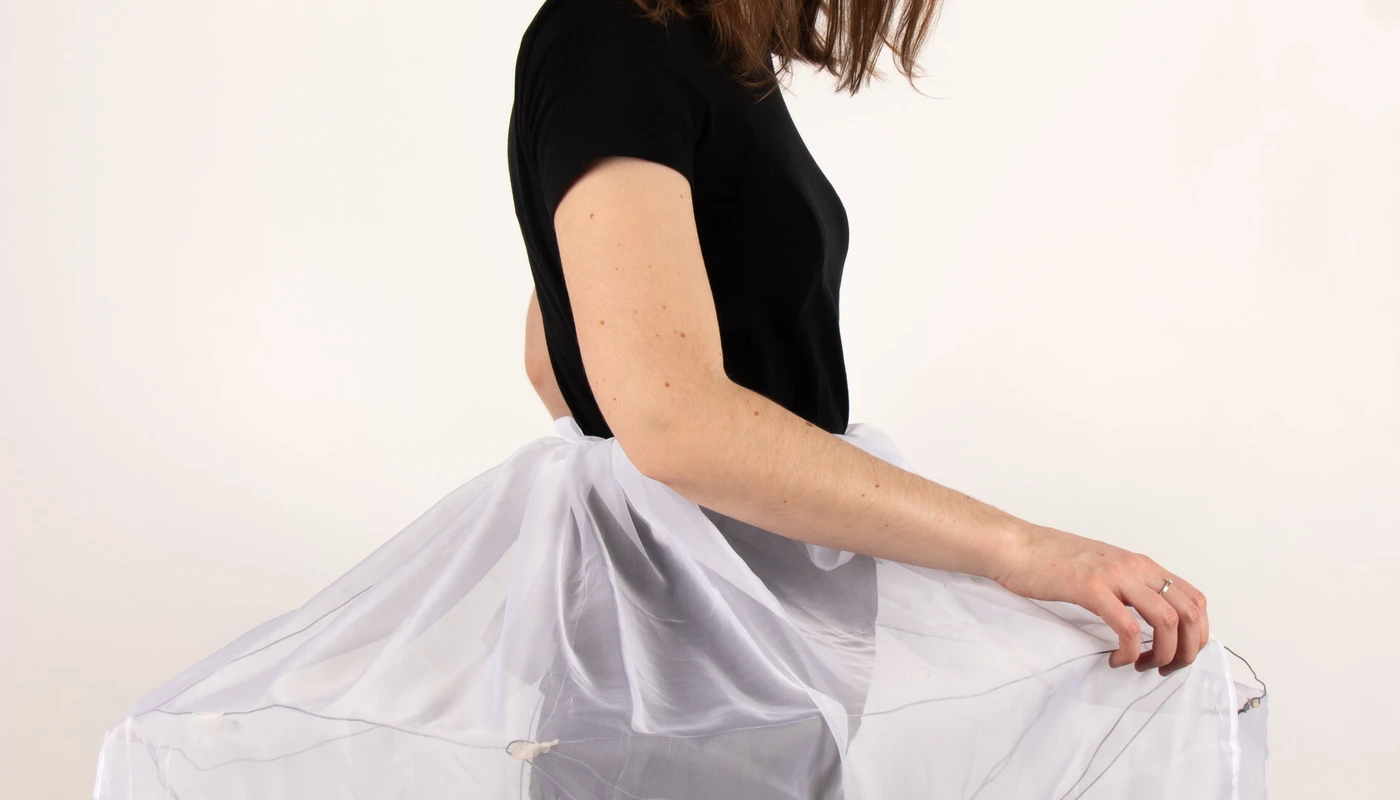
#mindyourspace – exploring personal space by Larissa Berghofer and Aitana Kugeler
- Students
-
- Education
- Master
- Subject area
- Communication Design
Industrial Design - Focus area
- Design for People
- Year
- 2021
- Education project type
- Course
What
With this project, we are raising awareness about subtle invasions in our personal spaces during daily interpersonal interactions.
The question we challenged ourselves with was: “What if the invasion of our comfort zone would in all cases leave visible consequences on our personal space.” The outcome is a series of experiments, a concept video, and a possible interactive exhibition
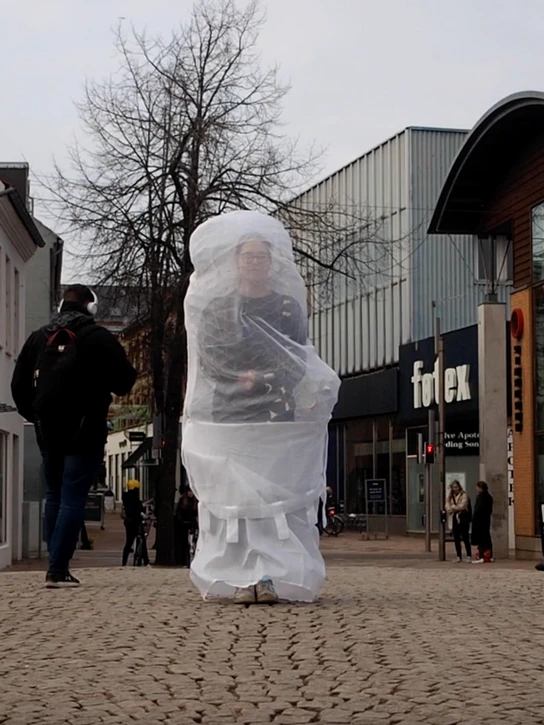
Why
Our personal space is part of our identity and therefore highly unique. These boundaries we build shape not only our current relationships but also how we build connections around us. We were especially interested in the dialogue between two people’s personal spaces when approaching each other that basically results in a constant negotiation of our boundaries. Taking into consideration our research and our own experiences, we concluded that gender plays an important role in the perception of personal space, as does body height and cultural background. We asked ourselves: how much of our space are we willing to give up for someone else? And who does our body belong to if we get invaded without our consent? These intrusions happen not only through touch, but also through vision, sound, and movement. It can cause traumatic psychological and physical consequences. While physical consequences like theft, harassment, or rape leave obvious visible marks on the body, psychological consequences like anxiety, distress, and panic, stay invisible, leaving no proof, and making it harder to be taken seriously.
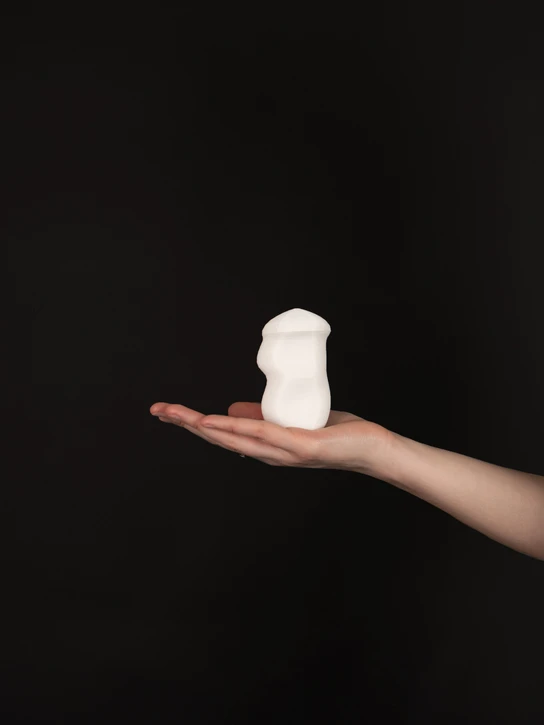
How
For our process, we’ve had an extensive exploration phase around the perception of our own personal spaces. We started mapping our bubbles in space and observed at what point we start feeling uncomfortable when people come closer to us. We then translated our measurements into a 3D space and designed digital probes on how to create your own personal space. In the end, we prototyped and 3D printed our spaces which was an important step as it finalized our research.
